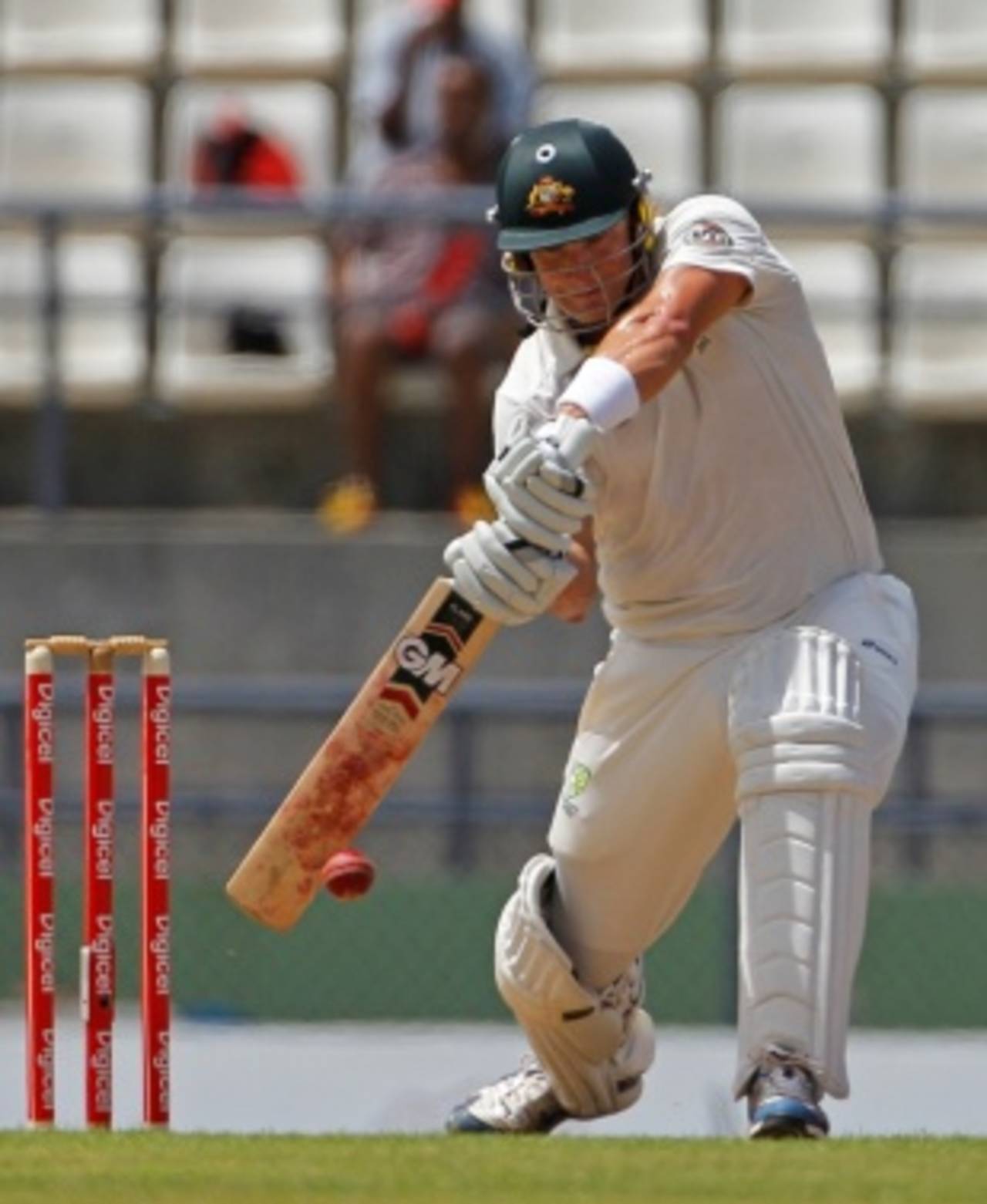Watson has often felt embarrassed by comparisons with Kallis, his modesty well founded given the vast difference between their respective Test batting averages (37.54 to 56.94) and tally of centuries (2 versus 43). Nevertheless, Watson at his best offers a similarly compelling combination of robust top-order batting and muscular bowling, and Inverarity said the example of Kallis dropping from Nos. 3 to 4 for reasons of longevity was an instructive one.
He suggested Watson may be set for a similar move whenever one of Michael Hussey or Ricky Ponting retires, as they must at some point not too far distant. "Watson at No. 3, could be a No. 4…" Inverarity said. "If Michael Hussey or Ricky Ponting retired, and if we included Phil Hughes, then it could be Hughes at three and Watson at four. That's feasible. Mickey [Arthur] often talks about Kallis, and a very good position for Kallis is bowling and batting at No. 4. I just think Watson's flexible."
The Sydney Sixers general manager,
Stuart Clark, has expressed irritation at plans to bring Watson home from the CLT20, particularly their seemingly hurried nature. CA's team performance manager, Pat Howard, said while the call was recent, the option had been flagged some months earlier, and was a simple case of prioritising Test matches and not allowing last summer's events repeat themselves.
"He's right, the final decision wasn't made until recently," Howard said. "This is a very big series against South Africa - Shane is an important cog for the national selection panel to have consideration of and the reality is you can't play all the games in all the tournaments, all the time.
"The fact that he's an allrounder makes him a pretty unique proposition. We're trying to avoid the same mistakes that we made 12 months ago. Stuart and I have been talking, and it has been reasonable. Outside the limelight it has been a fairly cordial conversation. I know this debate could keep going on but the reality is we've made a decision in the best interests of Australian cricket and in the best interests of Shane Watson."
Australia's increasingly directed and cohesive management of players has reflected the growth of thinking among its decision-makers that fresh, intermittently rested players are going to produce far better results than those forced to traipse around on the constant merry-go-round of international cricket.
Inverarity, the sage voice of more than 50 years' experience in the game, said keeping players on the park for every match was no longer an option. He raised the example of
Mitchell Starc as proof of how the judicious management of a player's workload could result not only in keeping him fit but also allowing his skills to develop.
"Rotation is not a dirty word, rotation is reality," he said. "The cold, hard facts are a cricketer can't just play every game, and last and perform at his best. And in the interests of developing some depth and creating opportunities for players, I think just phasing a few in and out is the best way to go.
"Mitchell Starc played in the first two Tests against New Zealand, then we kept him around the group for the first two Tests against India. We then played four quicks in Perth and he was the fourth; he didn't play in Adelaide. He came into the one-day series, we took him to the West Indies in a sort of development role. We had a couple of injuries and he came in for the last Test there.
"Then he went to Yorkshire and learnt to bowl in England. I think the planning with Mitchell Starc over the last 12 months has been pretty good. You saw how well he bowled first in the UAE and then Sri Lanka. He has been the beneficiary of the amount that he has bowled and the circumstances in which he has bowled, and being kept close to the team."
